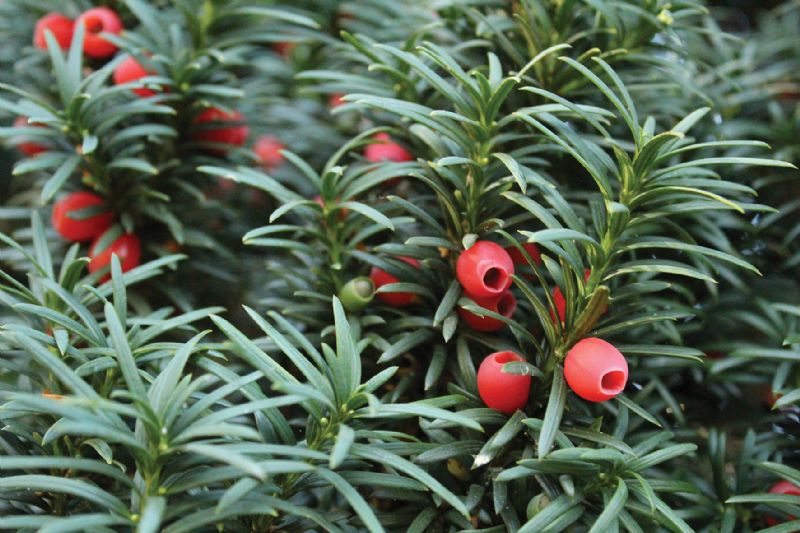- Home
- News, Articles & Reviews
We are hiring! Please click here to join our growing magazine delivery team in Gloucestershire!
Areas
Pets & Wildlife
Archive

Trees that brave the cold
All Areas > Pets & Wildlife > Wildlife Matters
Author: Anna McQuillan, Posted: Friday, 24th October 2025, 09:00
Summer is a distant memory, and the shops already believe it’s Christmas. But as the land quietens into brown and grey, keep an eye out for bursts of dark green brought by the landscape’s evergreens.
The UK has five native evergreen trees. Three are conifers – Scots pine, yew and juniper – while the other two are broadleaves – the holly and box. They stand hardy against the winter months, offering vital refuge from both predators and the cold. Their dense foliage provides hiding places for small critters, while the natural insulation creates a toasty microclimate within.
Fir, spruce and pine – what’s the difference?
Let’s state the facts to tell these apart – or maybe this hasn’t bothered you as much as it has me! Pines are easy to spot as they’re the only conifers with needles grouped into pairs or clusters, all sprouting from the same point on the twig. In contrast, the needles of fir and spruce grow individually.
However, if you encounter the fir or spruce whilst out on an autumnal stroll, firstly enjoy the scent, which is often reminiscent of Christmastime. Secondly, have a feel of one of its needles. If it rolls easily between your fingers, has multiple edges, and ends in a sharp point, you’re holding spruce. Fir needles, on the other hand, are flat so they won’t roll, and have a rounded end. Fir trees also have cones which always stand upright towards the sky. Rule of (green) thumb: spruce is sharp, fir is flat.
The super-abilities behind winter survival
Evergreens keep their leaves through winter thanks to some clever adaptations. Their waxy coating helps prevent water loss, which is particularly important when the ground is frozen, and water is hard to draw up. However, holding water in their leaves creates the challenge of how to avoid freezing.
Deciduous trees manage this by dropping their leaves altogether, many of which are doing so already. Evergreens, on the other hand, use a clever strategy: they produce a sugary sap within their cells that acts as a natural antifreeze. With a much lower freezing point, this allows them to keep their leaves – and survive the harshest cold.
Etymology time!
Conifers are defined by their cones; a feature that places them within a group of trees known as gymnosperms. The word gymnosperm comes from Latin, meaning naked seed, referring to the fact that their seeds are exposed rather than enclosed in fruits or nuts, as they are in flowering plants. This characteristic represents an early evolutionary strategy for reproduction in trees, and I find it a fascinating distinction that sets these ancient trees apart.
A huge congratulations to Knapp Lane Meadows
A quick shout-out to the team behind Knapp Lane Meadows, a newly designated nature reserve near Stroud. Thanks to the efforts of everyone involved, 13.8 hectares have been secured for wild-meadow habitat, with a mix of other ecosystems. It’s a brilliant achievement and a hopeful reminder of what’s possible when people come together for nature.
I hope that you all continue to get out and about and enjoy nature. It can provide a peaceful break from the bustle of life, but remember to wrap up warm!Copyright © 2025 The Local Answer Limited.
Unauthorized use and/or duplication of this material without express and written permission from this site's author and/or owner is strictly prohibited. Excerpts and links may be used, provided that full and clear credit is given to The Local Answer Limited and thelocalanswer.co.uk with appropriate and specific direction to the original content.More articles you may be interested in...


© 2025 The Local Answer Limited - Registered in England and Wales - Company No. 06929408
Unit H, Churchill Industrial Estate, Churchill Road, Leckhampton, Cheltenham, GL53 7EG - VAT Registration No. 975613000You are leaving the TLA website...
You are now leaving the TLA website and are going to a website that is not operated by us. The Local Answer are not responsible for the content or availability of linked sites, and cannot accept liability if the linked site has been compromised and contains unsuitable images or other content. If you wish to proceed, please click the "Continue" button below:




